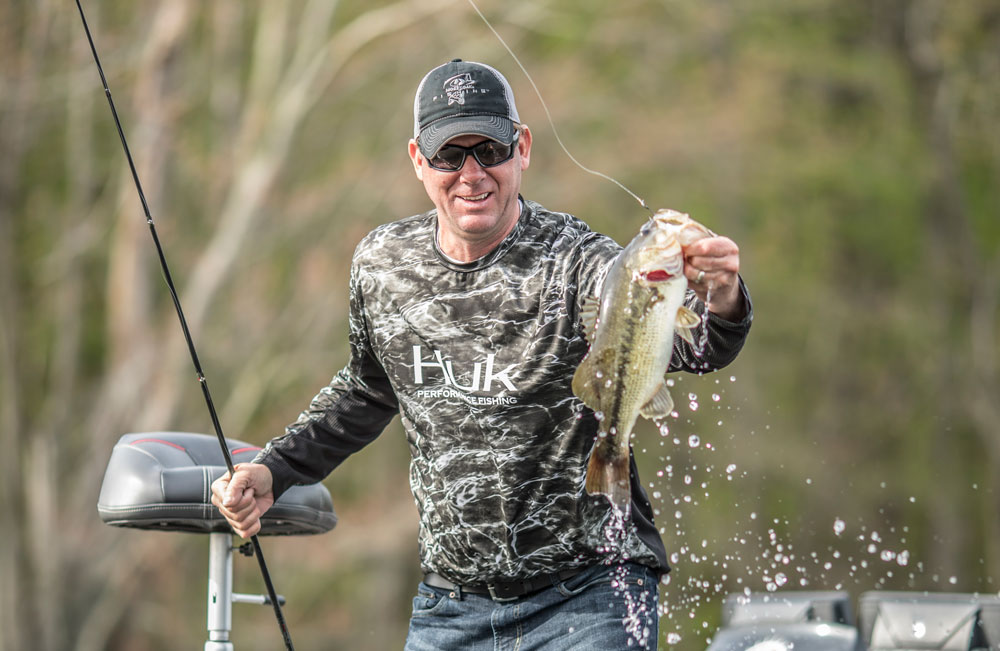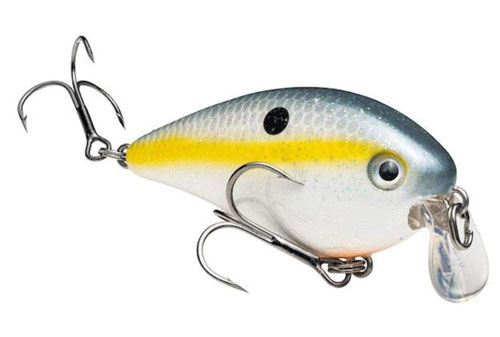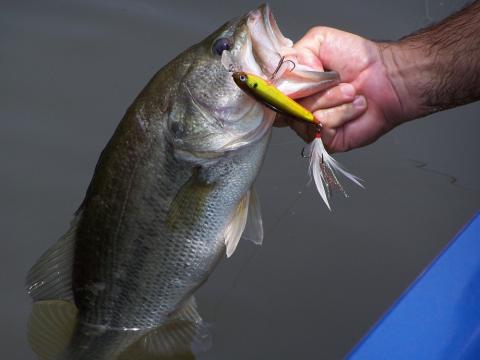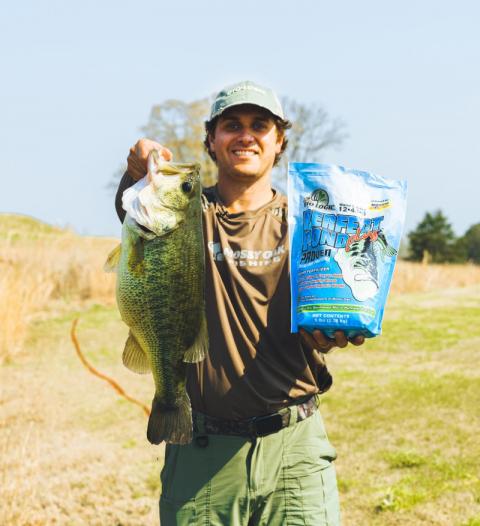with Kevin VanDam

Most square-billed crankbaits are designed to be fished in 0-5 feet water around cover. The primary action this lure has that makes it so unique is that it deflects off of cover with an erratic action, much like a bait fish that is dazed or has been spooked and is trying to get away from whatever it’s run into. That kind of action seems to trigger strikes from bass better in some situations than a round-sided crankbait will.
 When a round-sided crankbait hits cover, it tends to roll over and doesn’t deflect off that cover nearly as well as a square-billed crankbait does. The square-billed crankbait has a tighter wobble than most round crankbaits and therefore gives off a different type of vibration.
When a round-sided crankbait hits cover, it tends to roll over and doesn’t deflect off that cover nearly as well as a square-billed crankbait does. The square-billed crankbait has a tighter wobble than most round crankbaits and therefore gives off a different type of vibration.
Anywhere there’s shallow-water cover that you can crash a square-billed crankbait into, I think there’s an advantage to using it. I like to use the square-billed crankbait in the early spring and into the fall, when the bass are moving up into shallow water. I want the color of that lure to mimic the bait on which the bass are feeding. Often in the early spring, the crayfish will be out, and the bass will be feeding heavily on crayfish. So, when that square-billed crankbait hits any type of structure like rocks or wood, it will resemble a crayfish that’s encountered some type of cover. The first thing a crayfish will do when it hits cover is to jump or deflect off the cover to keep the bass from eating it.
The square-billed is such an effective strike getter for bass fishermen, that I’m working with Strike King right now on building a square-billed crankbait that will dive deeper yet still have that erratic action that we’ve all come to depend on when we’re fishing shallow water for bass.




























